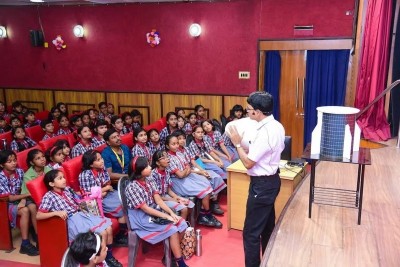 Chopping Board
Chopping Board
Cutting boards can produce microparticles when chopping veggies: Study
New York: Cutting boards are handy tools found in most homes and restaurant kitchens. But a small-scale study in ACS’ Environmental Science & Technology suggests that they are an overlooked source of micrometer-sized particles.
The researchers report that chopping up carrots on wood and plastic boards could produce tens of millions of microparticles a year.
However, a toxicity test showed no substantial effect on mouse cell survival from polyethylene or wood microparticles released during chopping.
Most cutting boards are made of rubber, bamboo, wood or plastic.
Over time, these kitchen implements develop grooves and slash marks from mincing, slicing and chopping food. Recently, researchers have shown that some plastic board materials, including polypropylene and polyethylene, can shed nano- and micro-sized flecks when cut with knives.
Yet those studies didn’t assess how many of these microplastics could be produced during realistic food preparation scenarios.
This would be an important piece of information because the particles might have negative health impacts if ingested.
So, Syeed Md Iskander and colleagues wanted to investigate the microparticles that would be released when chopping vegetables on plastic and wood boards, as well as any potential toxicity from these tiny materials.
The researchers collected and measured the micro-sized particles released from cutting boards, which were repeatedly struck by a knife. In their tests, they compared five people’s chopping patterns and one person’s chopping on different materials with and without carrots.
From the results, the team calculated that food preparation could produce 14 to 71 million polyethylene microplastics and 79 million polypropylene microplastics from their respective boards each year. The estimates could vary, depending on:
An individual’s chopping style.
The board material.
The force needed to cut through foods.
Whether ingredients are roughly or finely chopped.
And how often a cutting board is used.
Yearly estimates were not determined for wooden boards, though the researchers reported that these items sloughed off 4 to 22 times more microparticles than plastic ones in different tests.
But even though many microparticles formed, the researchers found that polyethylene microplastics and wood microparticles released when chopping carrots didn’t appear to significantly change mouse cells’ viability in lab tests. While plastic cutting boards are easy to clean, the researchers conclude that other options could be used to reduce potential microplastic contamination in foods.
Support Our Journalism
We cannot do without you.. your contribution supports unbiased journalism
IBNS is not driven by any ism- not wokeism, not racism, not skewed secularism, not hyper right-wing or left liberal ideals, nor by any hardline religious beliefs or hyper nationalism. We want to serve you good old objective news, as they are. We do not judge or preach. We let people decide for themselves. We only try to present factual and well-sourced news.







